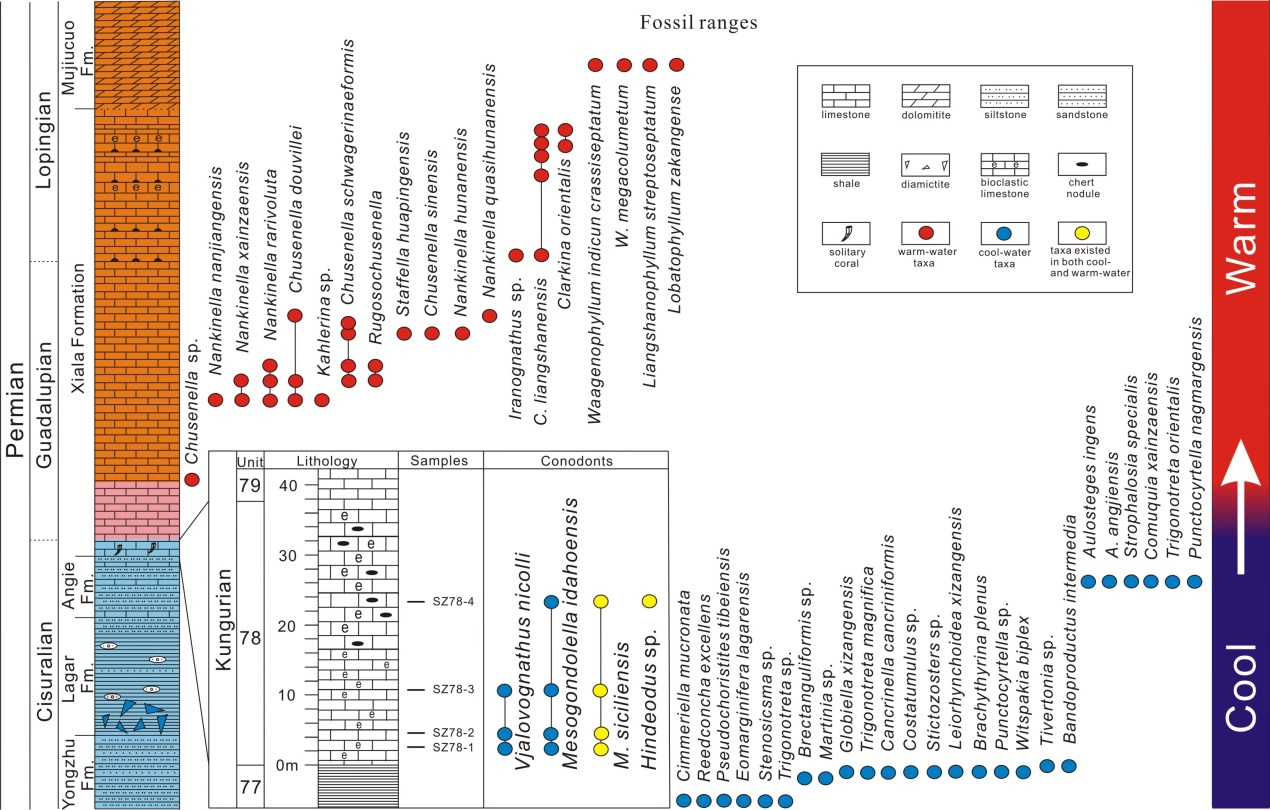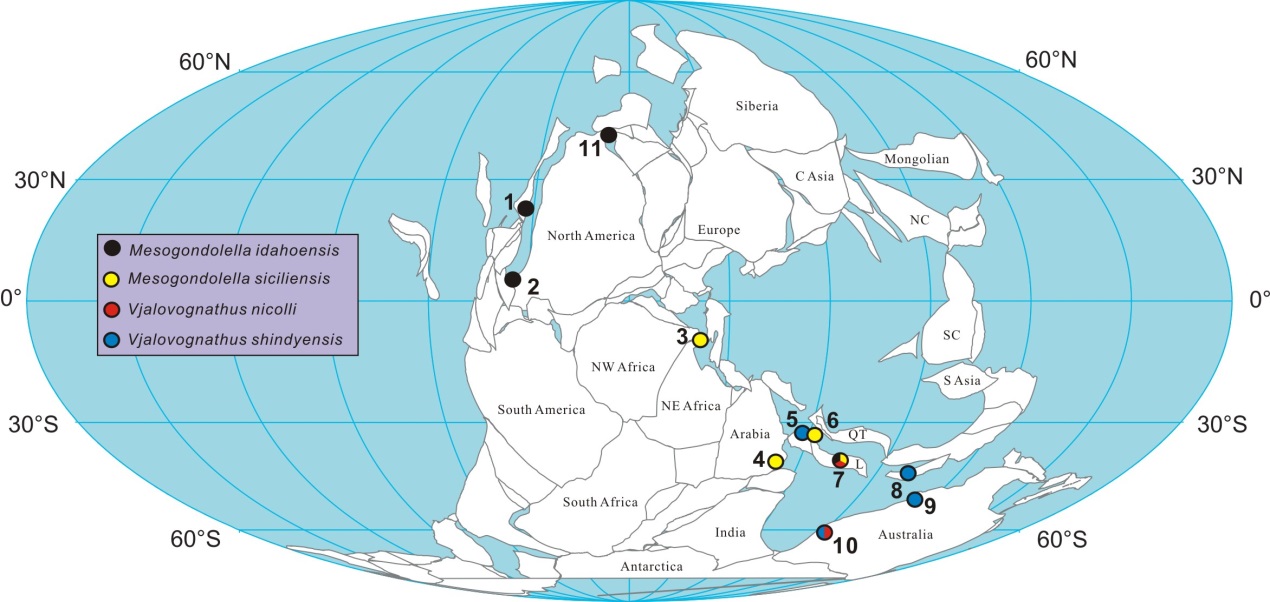The Tibet Plateau, which is the highest in the world, is relatively difficult to access; therefore, the stratigraphy and fossils in this area are poorly known although they are very important to interpret the palaeogeographical evolution of different tectonic blocks.
Dr. YUAN Dongxun, Dr. ZHANG Yichun from the Nanjing Institute of Geology and Palaeontology, Chinese Academy of Sciences and their colleagues reported a new discovery of an abundant conodont fauna from the lowest part of the Xiala Formation in the central part of the Lhasa Block, Tibet. This conodont fauna includes three genera and four species (Mesogondolellaidahoensis, M. siciliensis, Vjalovognathusnicolli n. sp. and Hindeodus sp.). The conodont fauna indicates that the lowest part of the Xiala Formation is late Kungurian in age based on the presence of abundant Mesogondolellaidahoensis and the denticle characters of Vjalovognathu snicolli n. sp. The presence of the conodont genus Vjalovognathus, the associated small solitary corals and the absence of any fusulinids clearly suggest a cool-water condition in the lower part of the Xiala Formation. Thus, the Xiala Formation in the central Lhasa Block can be restricted to an age from late Kungurian to Wuchiapingian. This is in contrast to the warm-water faunas consisting of abundant fusulinids, compound and large solitary corals, and warm-water conodonts in the upper part of the Xiala Formation from late Guadalupian to Wuchiapingian in age. This dramatic faunal change suggests that either palaeoclimate had greatly changed from a cold condition to a warm condition after late Kungurian in the peri-Gondwanan region or the palaeogeographical position of the Lhasa Block had drifted northward into the warm-water regime from late Kungurian to Guadalupian. The new family Vjalovognathidae n. fam. and a new species (Vjalovognathusnicolli n. sp.) are proposed, based on abundant specimens from central Tibet.
Reference information of this paper: Yuan Dong-xun, Zhang Yi-chun, Shen Shu-zhong, Henderson, C.M., Zhang Yu-jie, Zhu Tong-xing, An Xian-yin, Feng Hong-zhen, 2015. Early Permian conodonts from the Xainza area, central Lhasa Block, Tibet and their palaeobiogeographical and palaeoclimatic implications.Journal of Systematic Palaeontology. DOI:10.1080/14772019.2015.1052027.

Generalized Permian succession in the Xianzaarea, ranges of fossils at the Mujiucuo section and their implication of palaeoclimatic changes

Reconstruction showing the palaeogeographic distribution of Mesogondolellaidahoensis, M.siciliensis,Vjalovognathusshindyensis and V.nicolli. 1, Idaho; 2, West Texas; 3, Sicily; 4, Oman; 5, Pamir; 6, Shiquanhe, Tibet; 7, Xainza, Tibet; 8, Timor; 9, Canning Basin; 10, Carnarvon Basin; 11, Sverdrup Basin.
Download:
